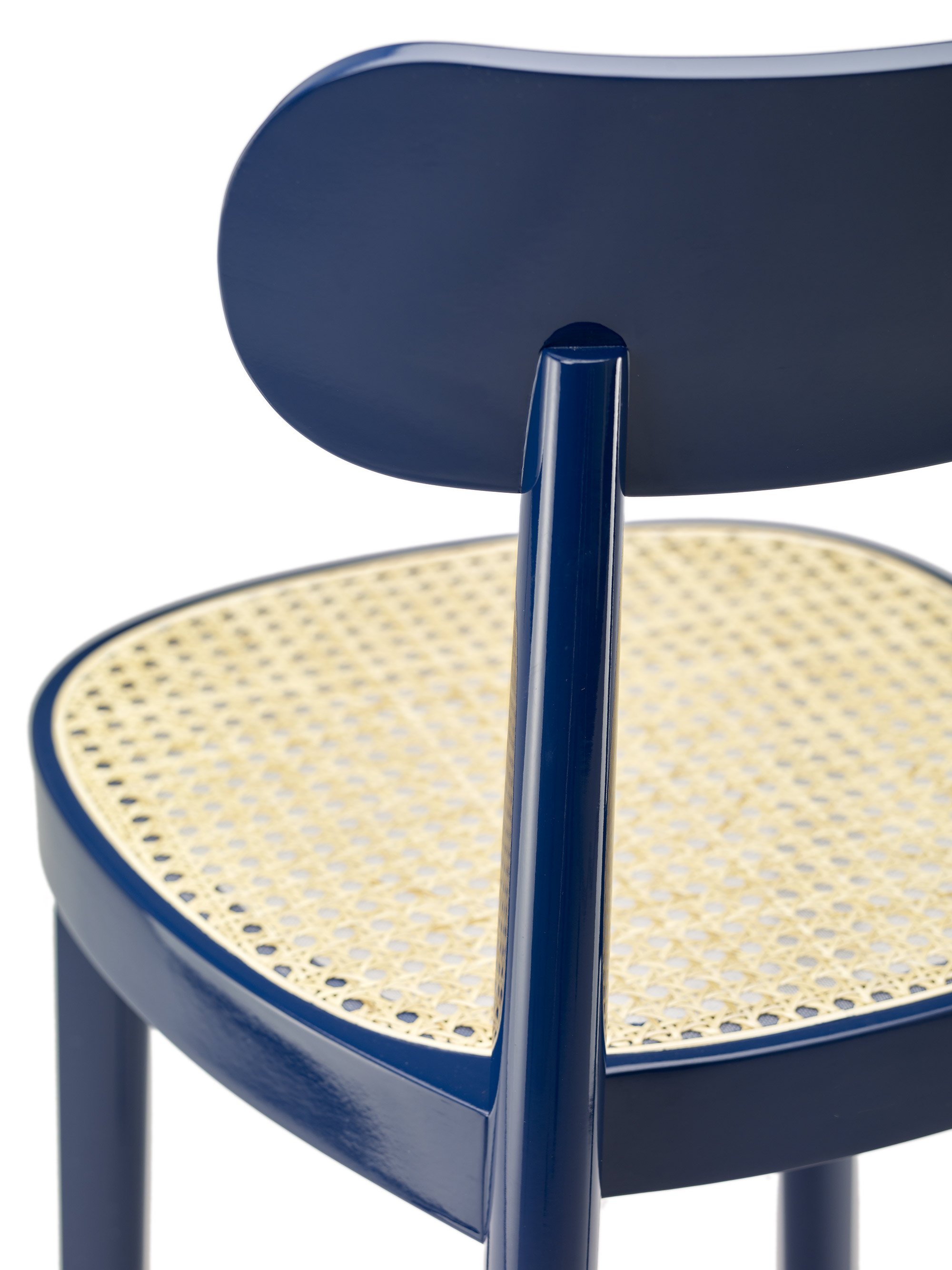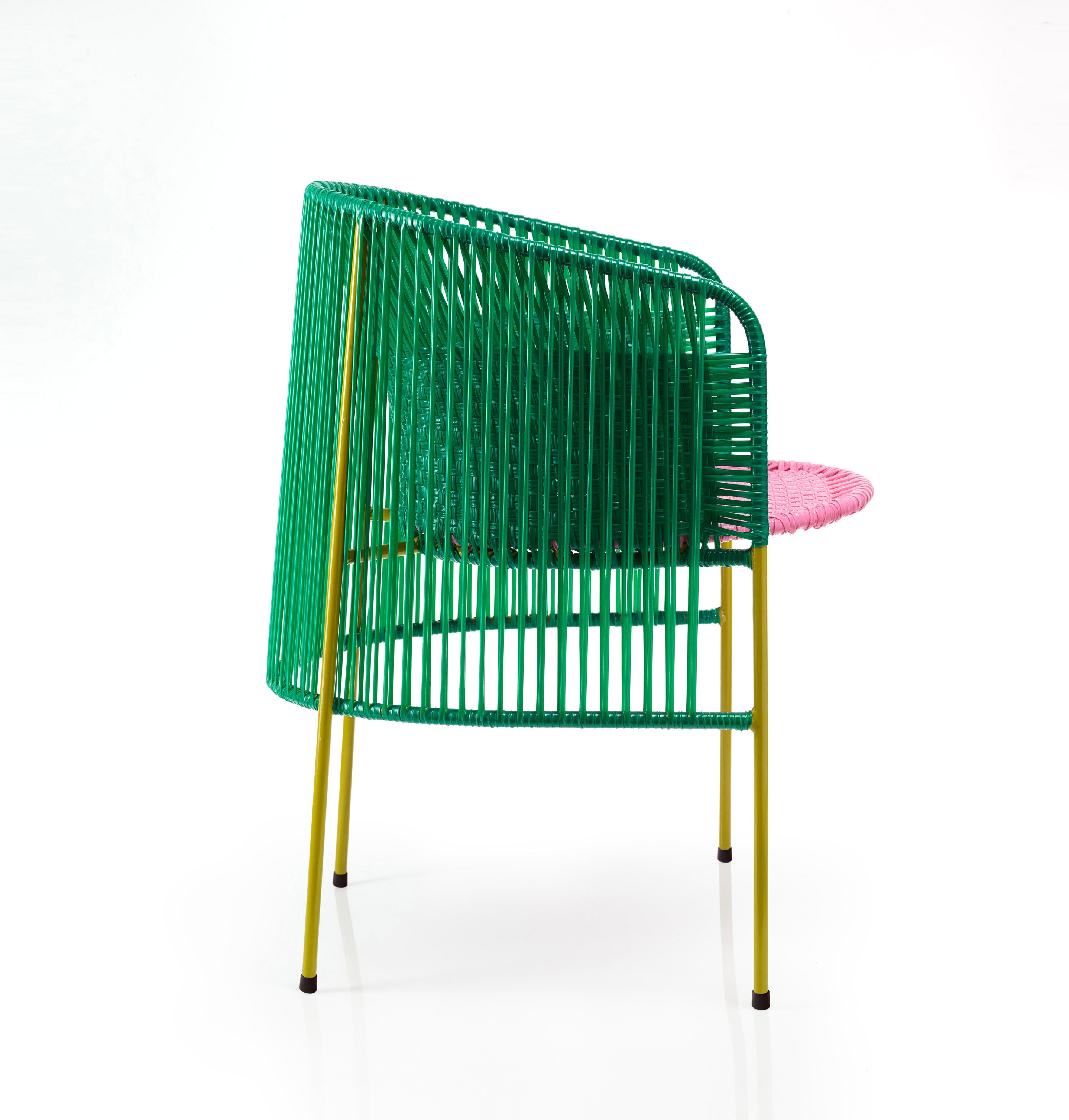German-born designer Sebastian Herkner founded his eponymous design studio in Offenbach am Main (close to the central German city of Frankfurt) in 2006. In what might be described as a meteoric rise, the now thirty-seven-year-old Herkner is arguably one of Germany’s most famous modern-day designers. As a case in point, MAISON&OBJET (January 2019) chose Herkner as its Designer of the Year—a rather well-deserved accolade indeed.
Sebastian Herkner’s impressive body of work is wonderfully inventive and truly eclectic, with a wide range of colors, shapes and functions found across the genres of furniture, product and lighting design. Perhaps most notable is that Herkner genuinely cares—about craftsmanship, honest design and sustainability. And more than just environmental sustainability, he concerns himself with social sustainability, in particular building relationships with local craftspeople and companies that help create healthy and liveable communities. In the course of his work, Herkner maintains a local view in what is an increasingly globalised world.
More Behind the Design
As a designer, Sebastian Herkner does not think in terms of trends or design cycles—instead, he follows his instinct. In collaborations, he is more concerned with a company’s common sense approach and vision than their actual design status. Despite working with some big name companies—Cappellini, Dedon, Moroso, Rosenthal and Thonet, to name but a few—Herkner is equally happy when embracing traditional craftsmanship, working with lesser-known brands and craftspeople. Such qualities certainly set him apart from a number of his contemporaries.
Gessato gets behind the design with Sebastian Herkner
I see artisanship and heritage as central tenets of your approach to design—the colorful and decorative Caribe and La Che collections for Ames Sala are just two examples. What have you learned from working with traditional craftsmen and their approaches to creativity?
I find a certain beauty and quality in crafted products, and particularly love the honest and sustainable aspects. The dialogue between myself and the craftsman is key to my design process. Observing craftsmen at work, I try to understand their specific techniques; I’ll then ask them to do something that is more challenging, with new ways of interpreting what is possible. Working on intercultural projects—such as my collaboration with Ames (a Columbian-based brand working with traditional artisans)—is very unique in the design world. We are committed to working together with Columbian people and setting up a serious brand. It’s going extremely well.
As someone who was born in Germany and has a studio based in Germany, what excites you most about the German design scene?
Actually, to be honest I don’t care about it. I spend 150 days per year in other countries and don’t think in terms of clusters or borders. For me, I find it most important to be open-minded and curious. I love to discover—looking for inspiration—and traveling is a valuable way of learning about other cultures and people. Nowadays, with globalization, we get more and more of the same information and the same products. Instead, I want to seek out those quintessential local traditions.
As a conscientious and passionate designer, what is your view on ‘fast design’ and mass consumerism—do you see an end to the ever increasing mindset of ‘more and now’?
Well my aim is to design objects of a high quality, locally and in a responsible and sustainable manner. I want my products to become companions in our lives. I don’t think in terms of trends or typical design cycles. My designs are statements and personalities—you have to interact with them and take care of them.
You design an array of products for a number of creative companies. Whether it’s a chair, a lamp, a bicycle or a piece of scenography, what is your design process: do you have a particular approach?
I enjoy the challenge of diversity. I always start with a sheet of white paper, even it’s my fifth chair. Every briefing, company and individual is different. I’ll visit the company at the beginning, to understand their DNA, history and vision for the future. I want to design the best for them and that’s a huge responsibility. Too many designers create something and show it to a number of companies. I believe that a successful design is designed for one specific company. It respects the values and approach of that company and tells my story.
In what ways are you influenced by culture and society generally: how does the day-to-day impact your work?
I read the newspapers daily and changes in society do affect me a lot. Every design decade is a kind of mirror of the political, social and technological influences found across society. The Bauhaus celebrates 100 years in 2019—its establishment was the way in which certain architects, artists and designers reacted in the wake of WW1 and to art deco. It was about industrialization, minimalism, new technologies and the use of materials.
Increasingly, it seems as though ‘sustainability’ is the buzzword in design—in my opinion, it’s a word adopted by a number of companies and designers in order to inflate their (typically) inadequate eco credentials. Is this a fair assertion? What does sustainability mean to you?
I designed the Bell Table some ten years ago. I went to Poschinger, a small heritage glass manufacturer in the Bavarian Forest, literally in the middle of nowhere. At that time, the company was really suffering in terms of its glass production. It made some things for tourists and worked on restoration pieces for castles in the area. After three years of searching for a producer for the Bell Table, the German brand ClassiCon put it into production. Ever since then, the table’s glass base has been hand-blown by skilled glass-blowers at Poschinger. Today, Poschinger employs new people, educates new glass-blowers and has built new furnaces. I think this is one of my biggest successes—a kind of social sustainability. It supports the crafts in that area and makes the residents proud.
You collaborate with a range of design names, big and small. What do you look for in a collaborative partnership?
That’s true. I don’t look for big names, but instead look for common sense and vision. And so I collaborate with big names such as Dedon and Moroso, but also small names like Pulpo and Ames. It is always a very personal decision, just like the whole design process. I always follow my instinct, when I collaborate and design.
Your work can be described as both innovative and traditional. It’s a formula that appears to work well. How do you marry these two approaches?
Actually, with the 118 Chair for Thonet, we used a mix of tradition and innovation. We employed traditional crafts, such as steam bending, for the seating frame, and new CNC technologies to mill the legs of the chair with absolute precision. Where we use both tradition and technology, we do so respectfully—I don’t want my products to look futuristic.
I would describe your body of work as wonderfully inventive and eclectic, with a wide range of colors, shapes and functions. What is it that unites everything—what is a Sebastian Herkner design?
Colors and the right use of materials give a product its soul and personality. This is very important. The colors are already in the sketches I do to find the right story. There are typical colors for certain materials and then others we can choose and add to a material. I think in today’s virtual, in ‘the cloud’ world, we long for something to hold onto—it’s about tactility.
You have been honoured with Designer of the Year at MAISON&OBJET, January 2019. What’s your best piece of advice for those eager, up-and-coming designers out there?
I would suggest finding your own design language and philosophy, enjoy being a designer and work using your passion and instinct.







